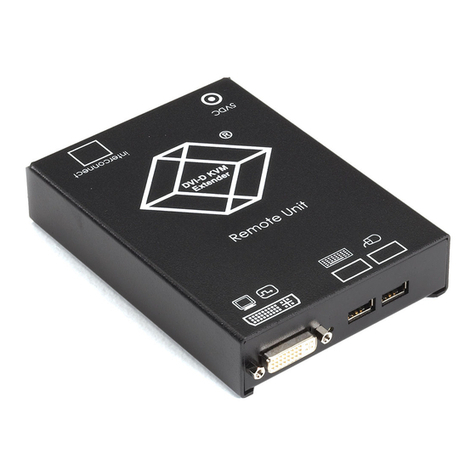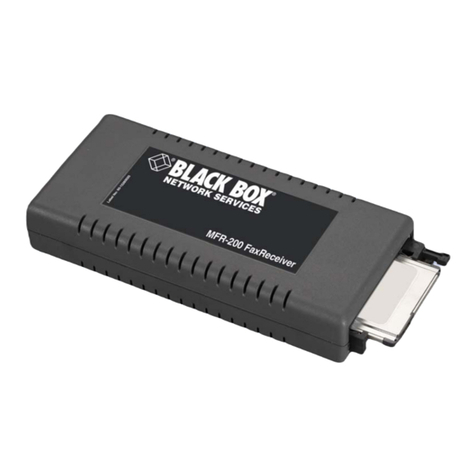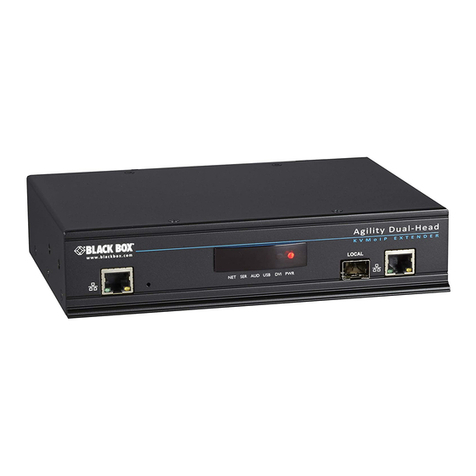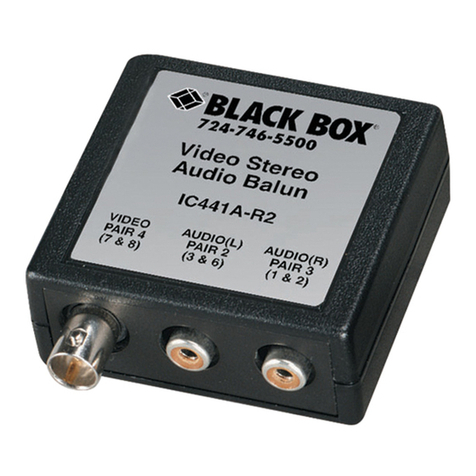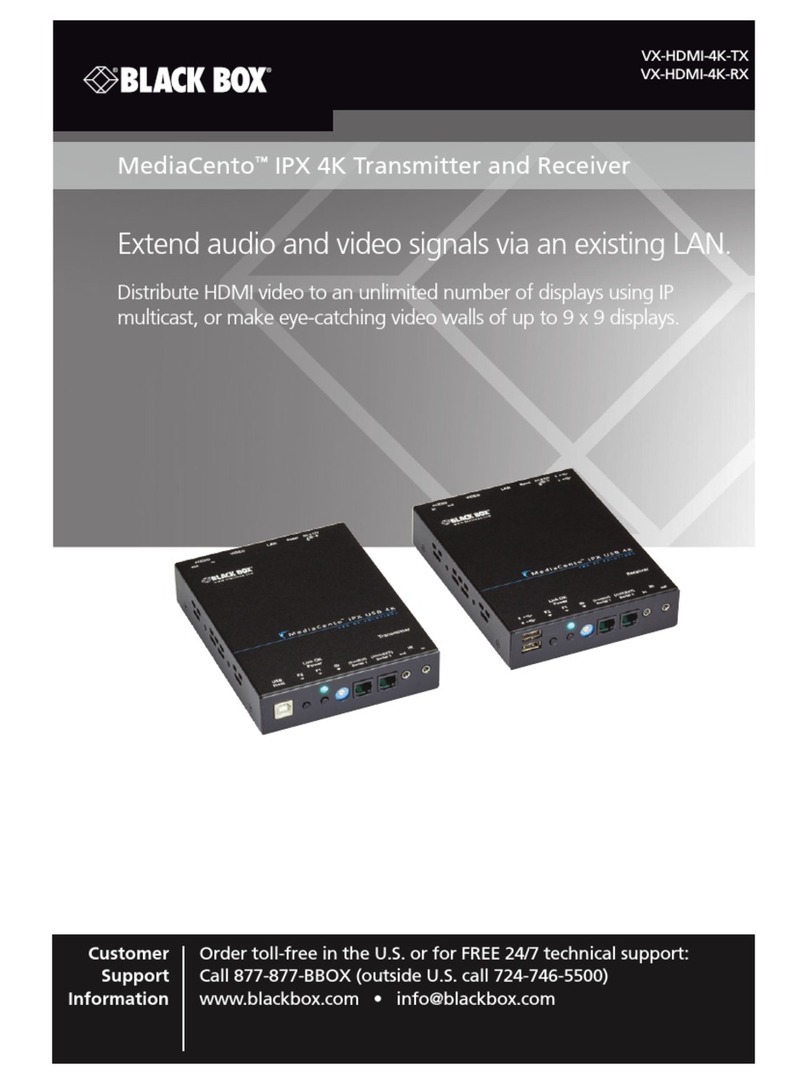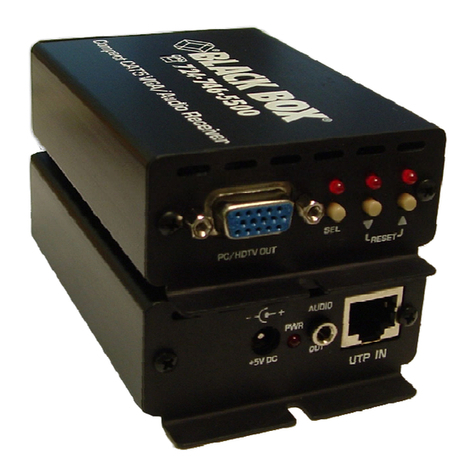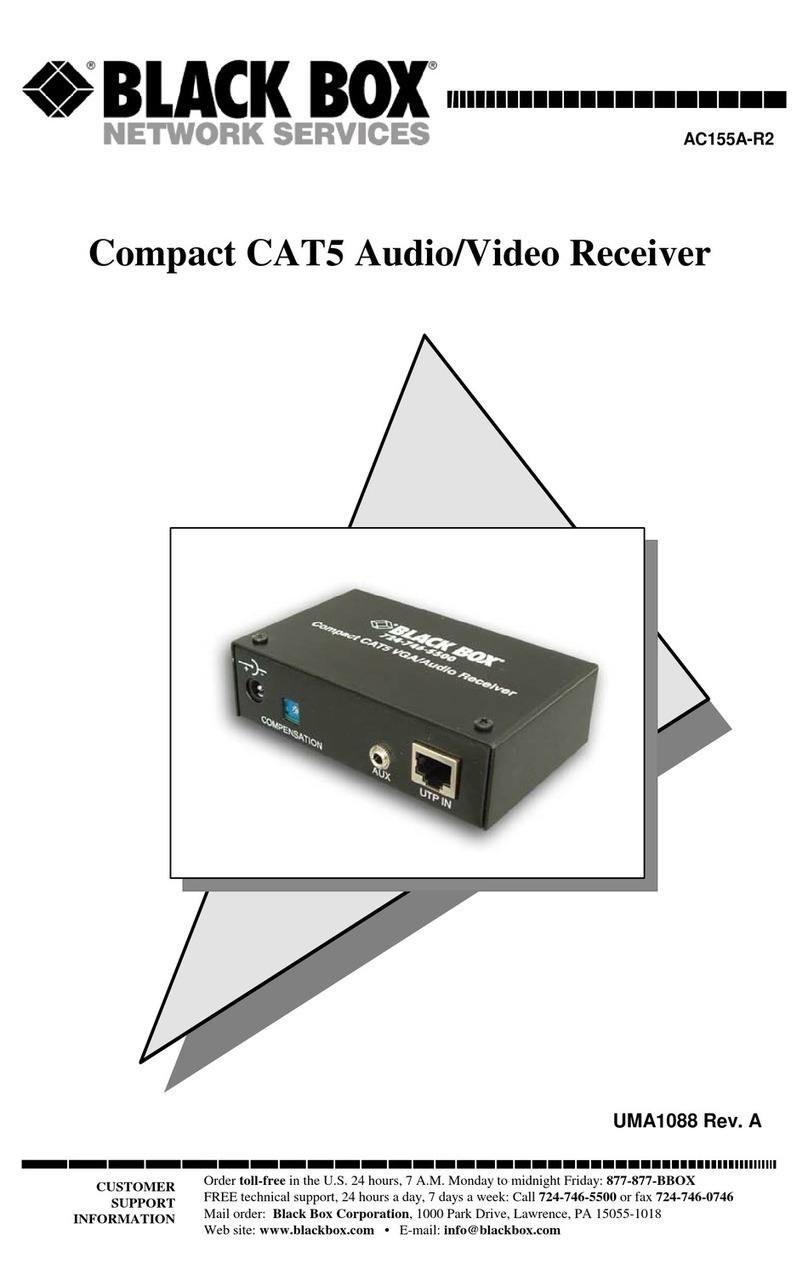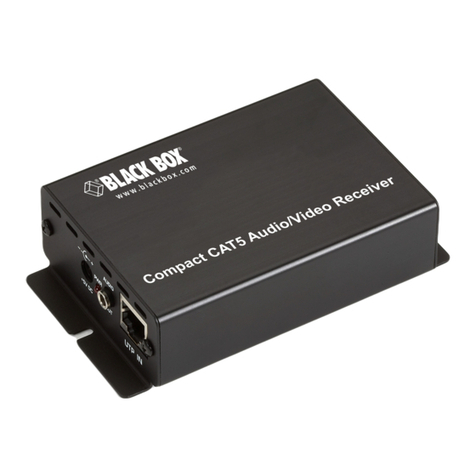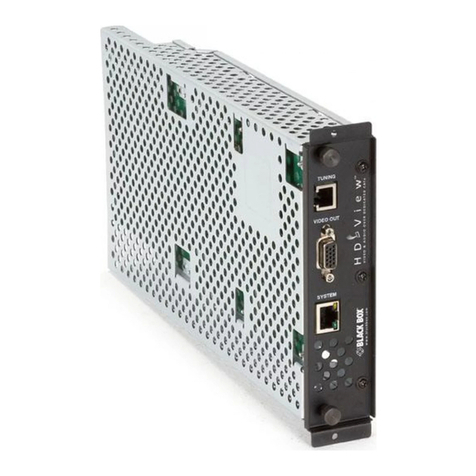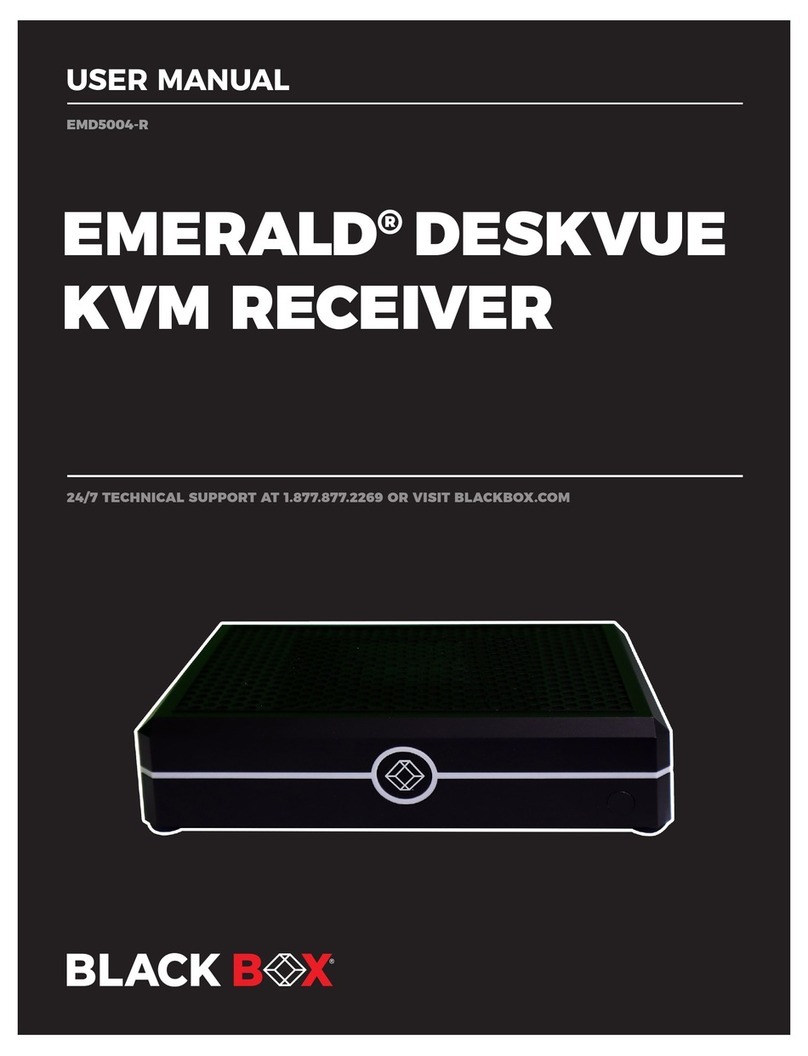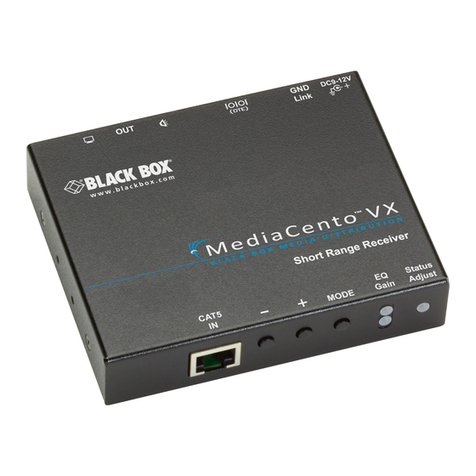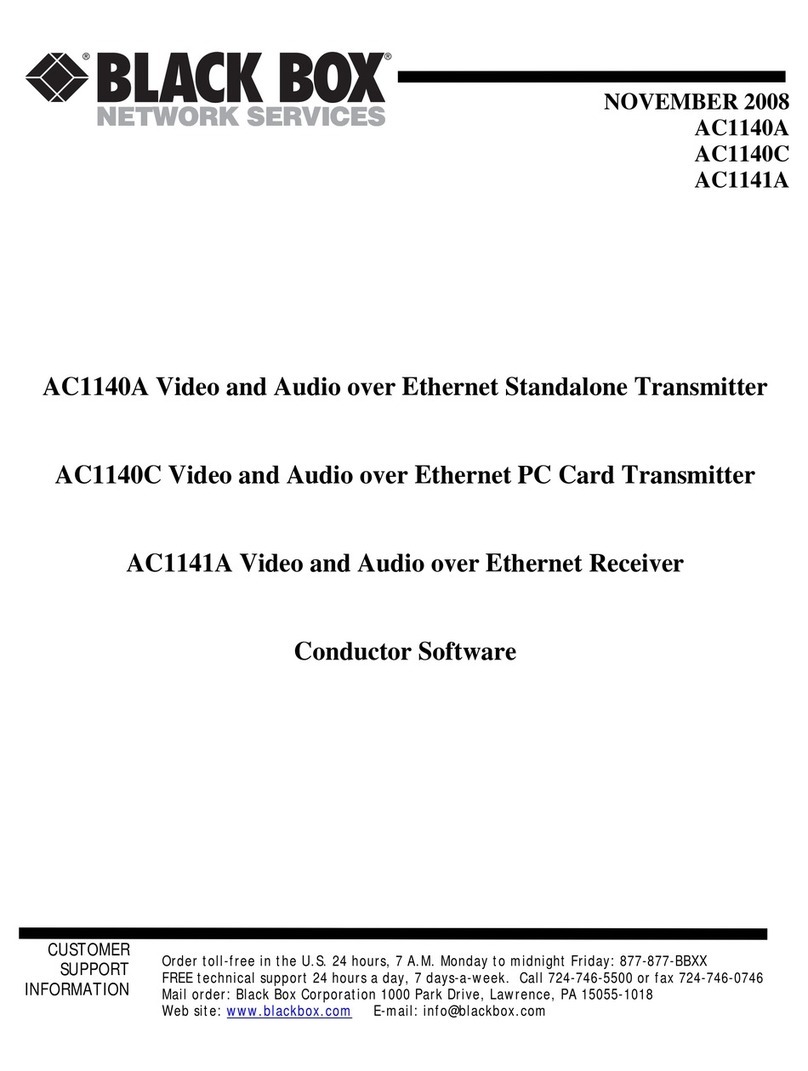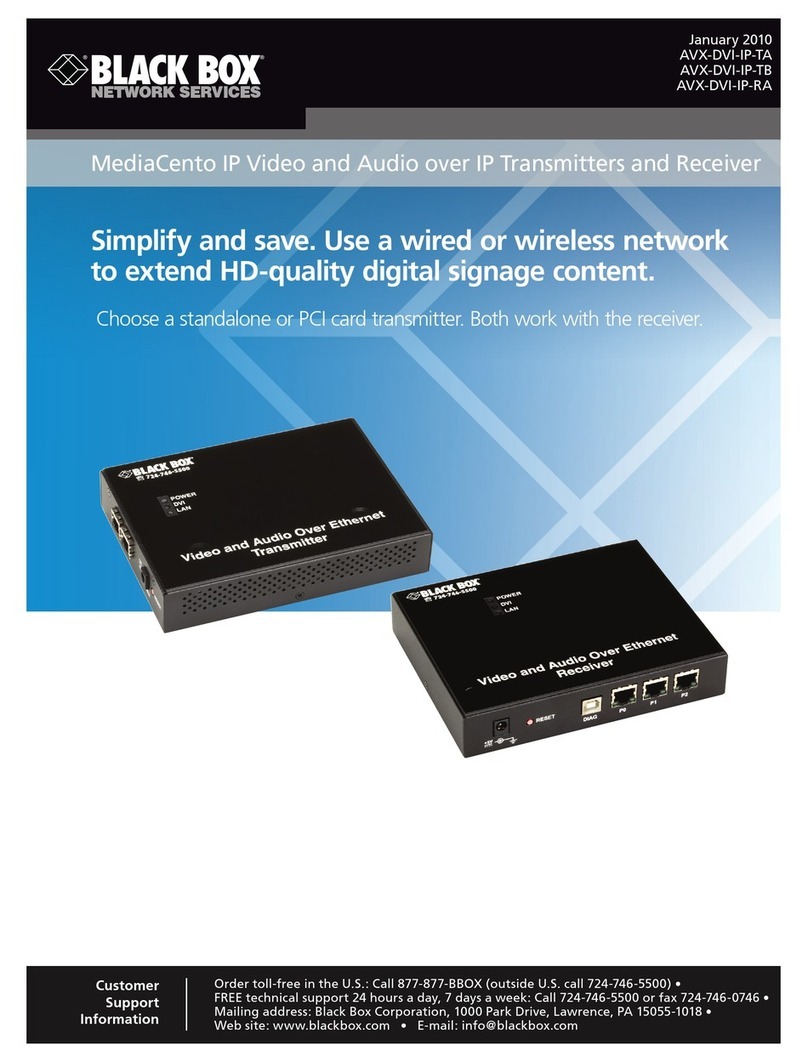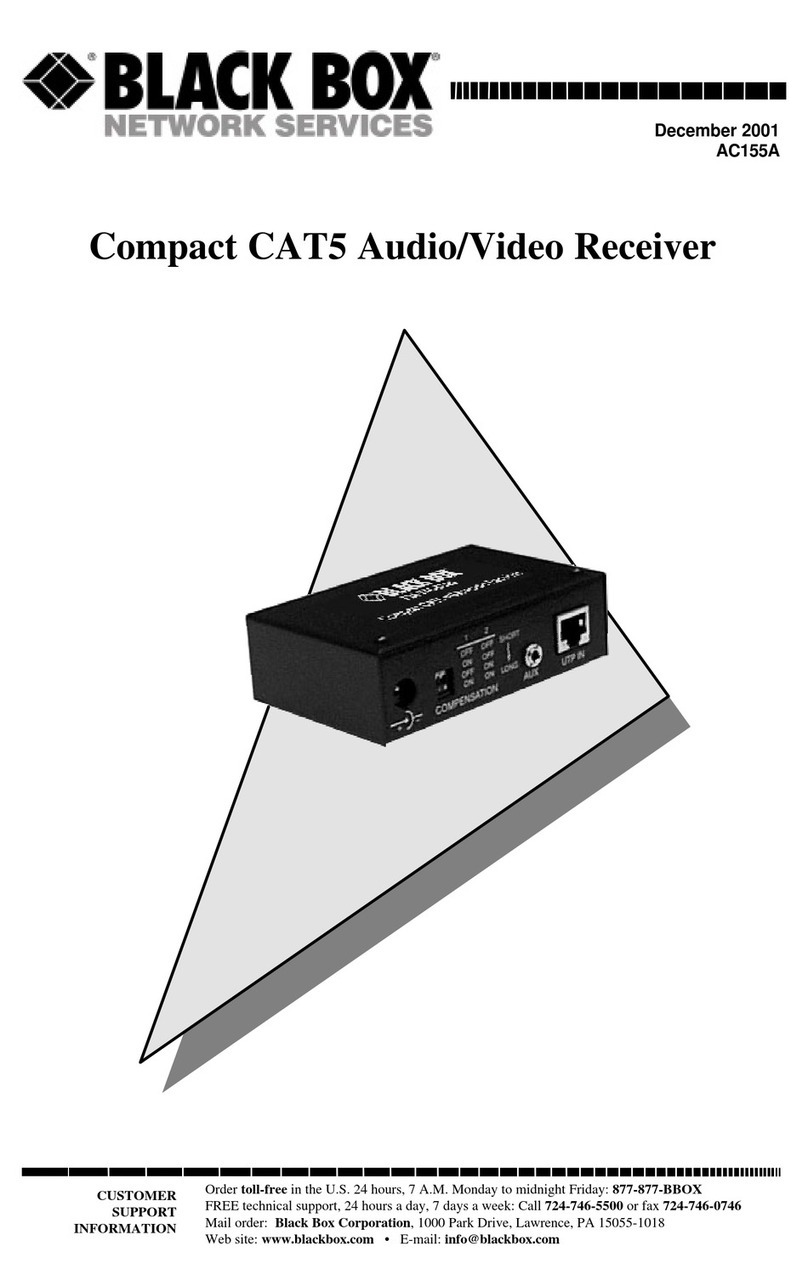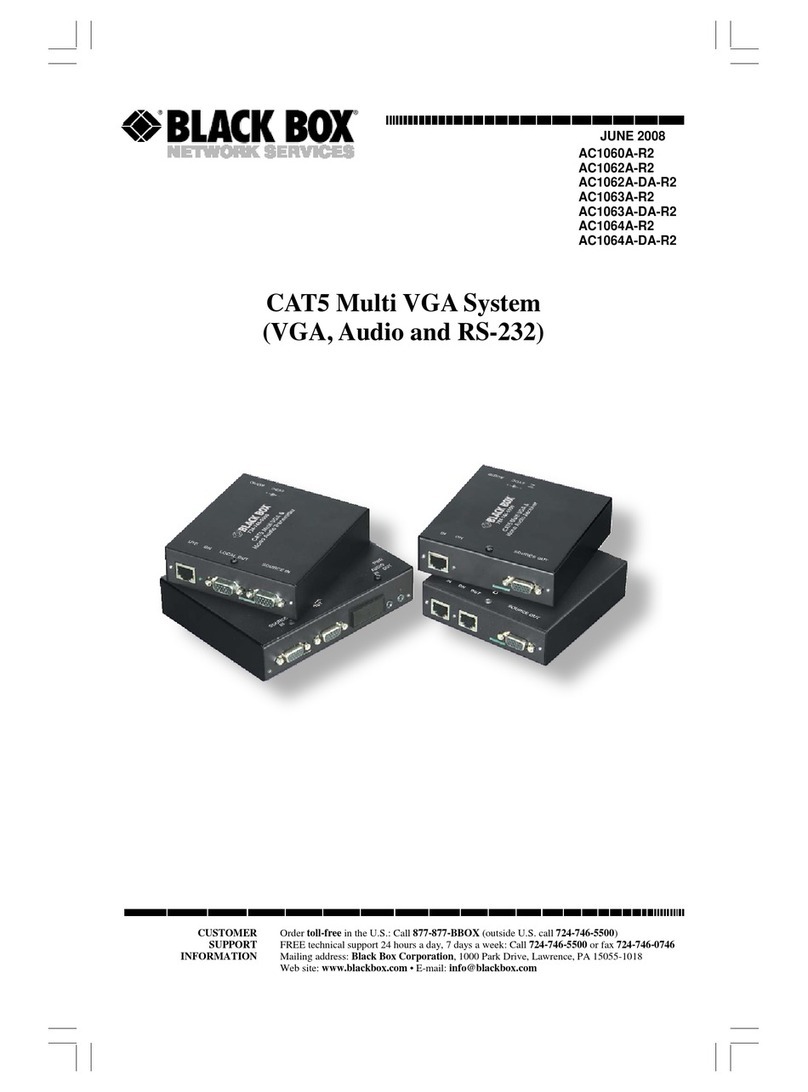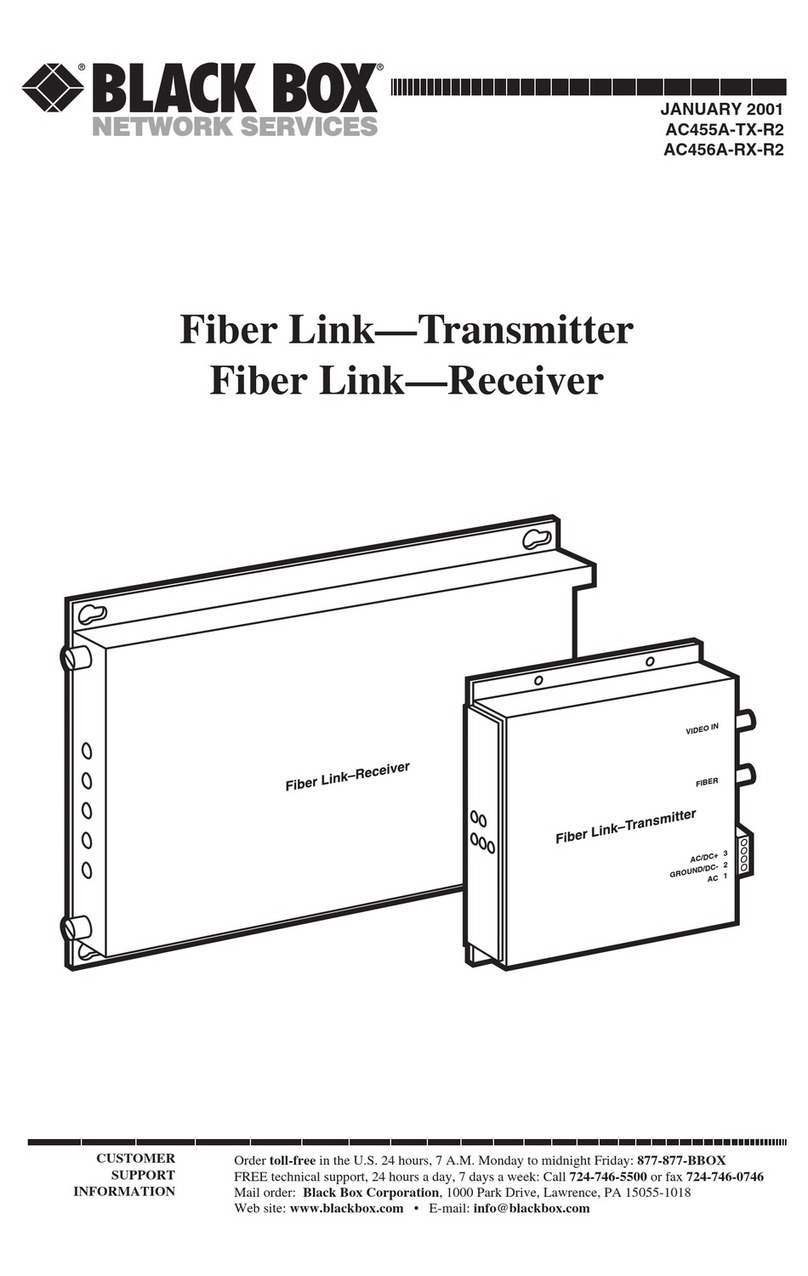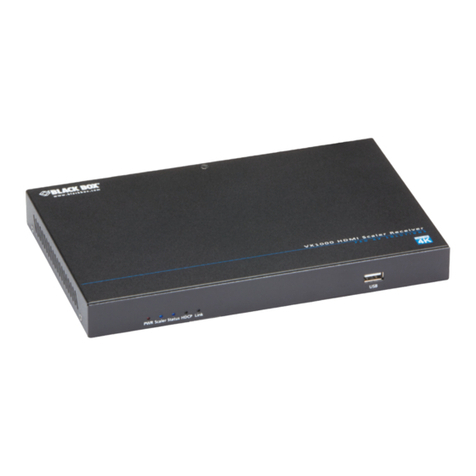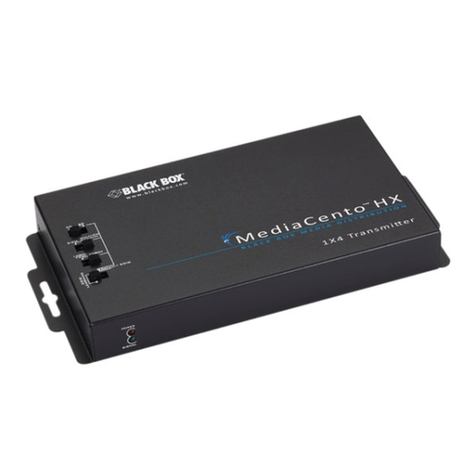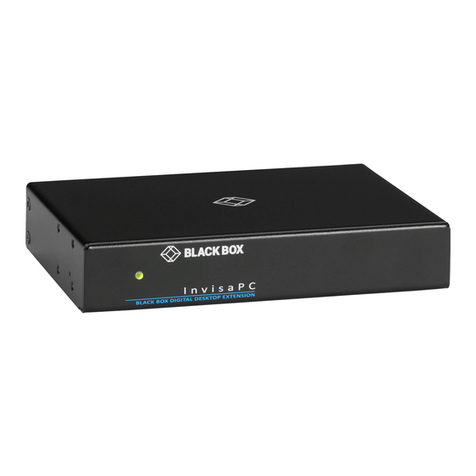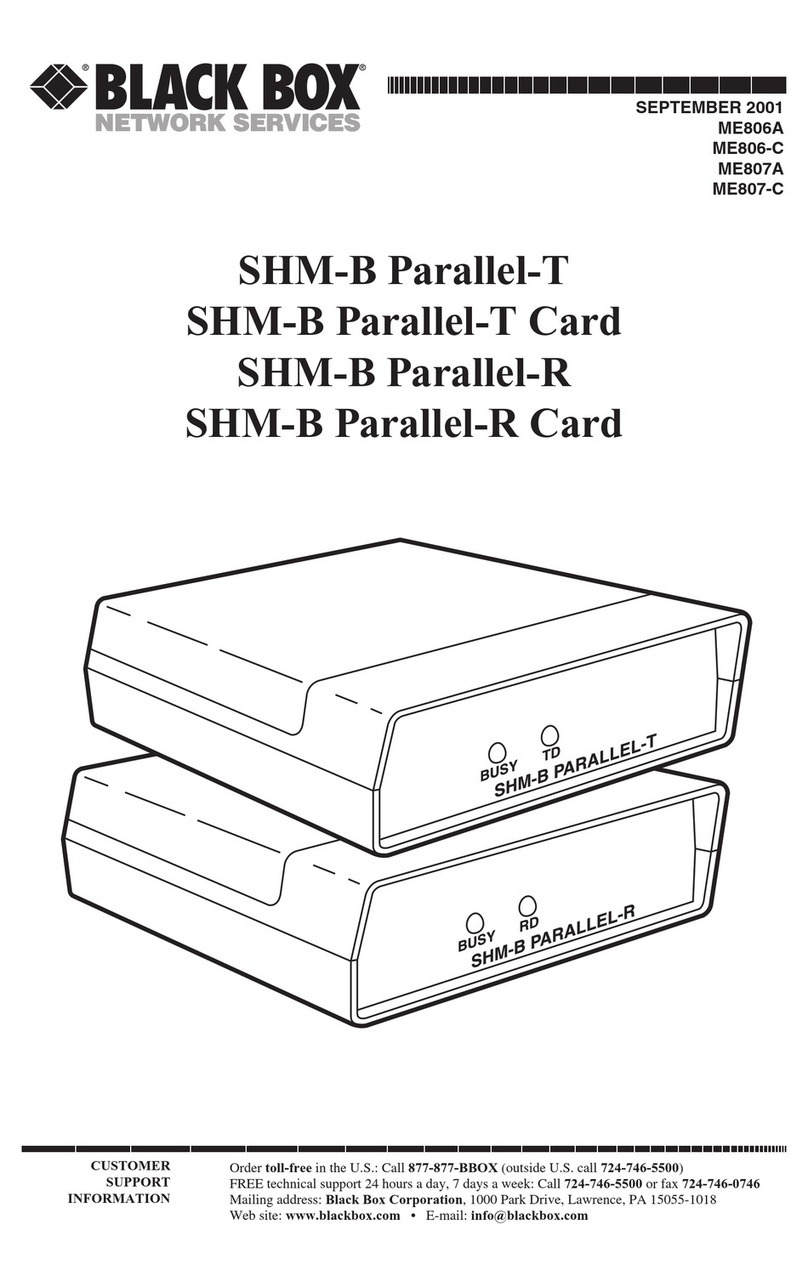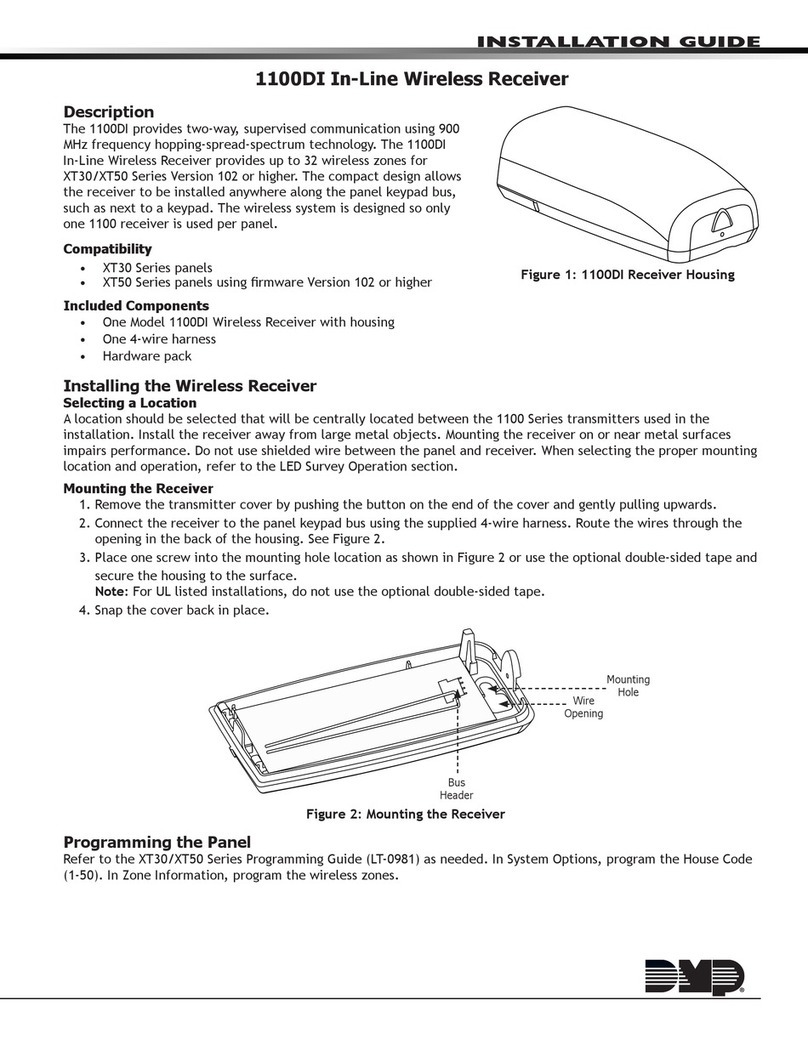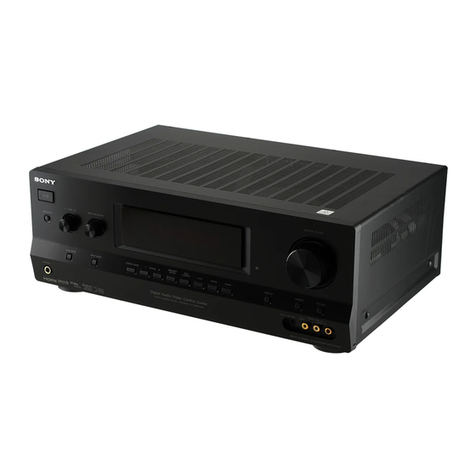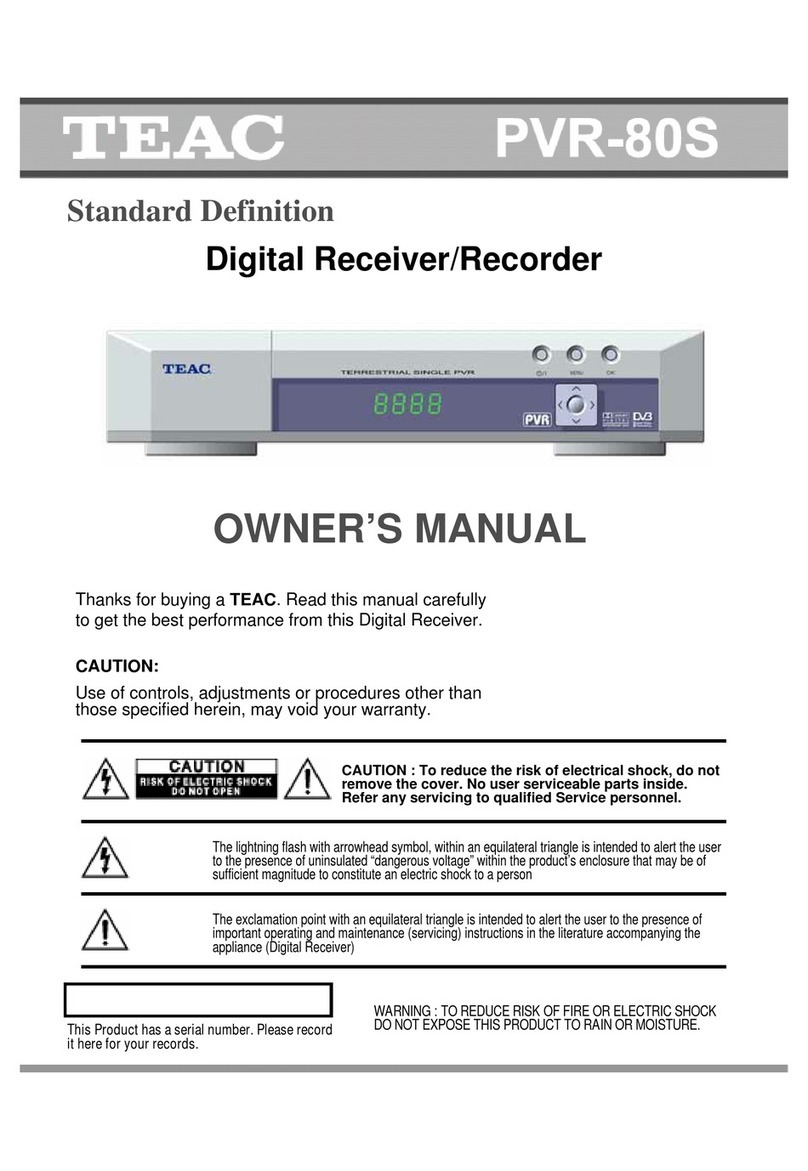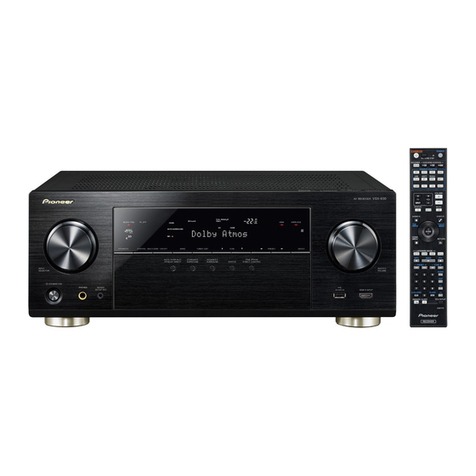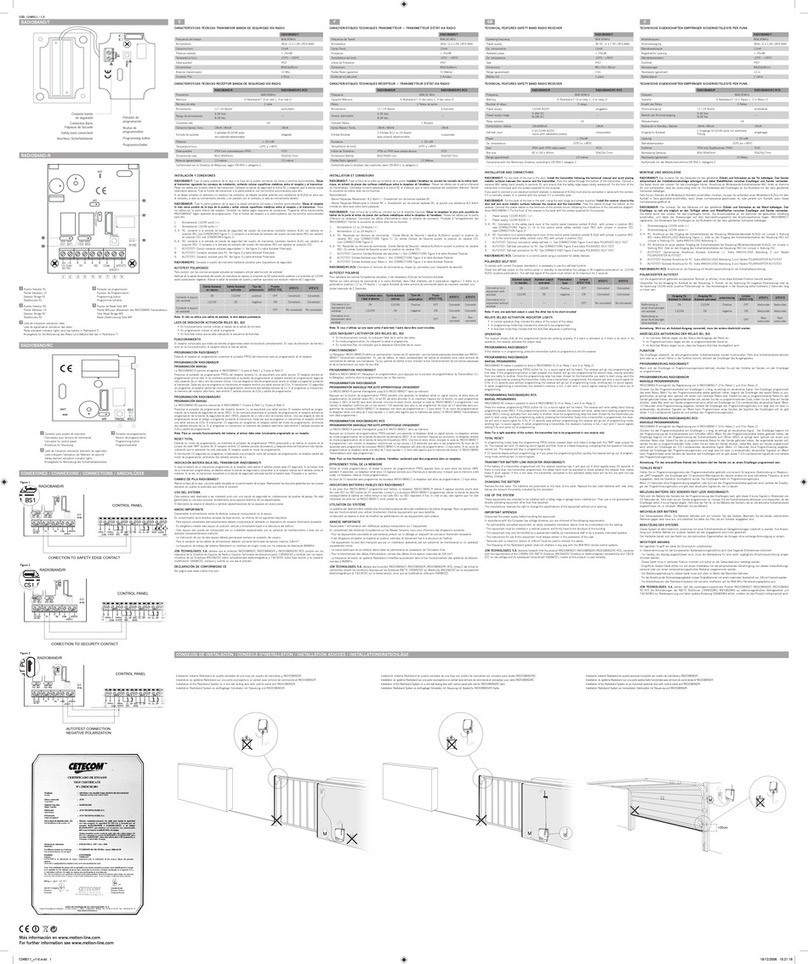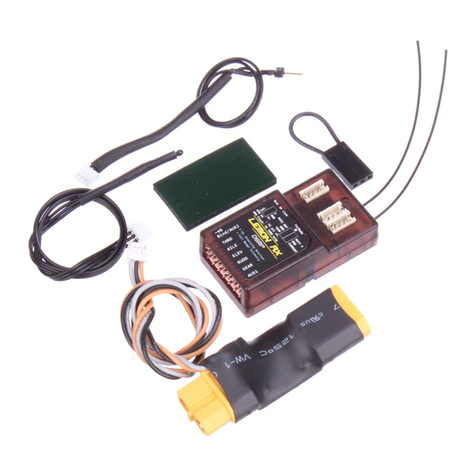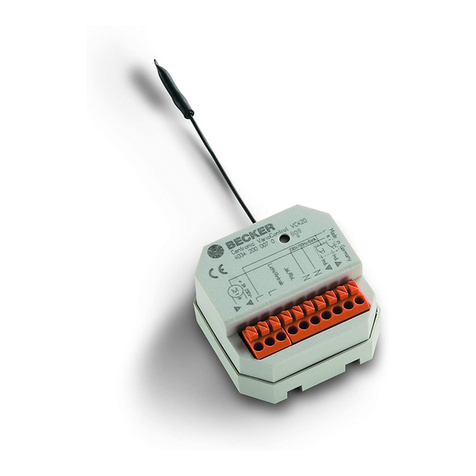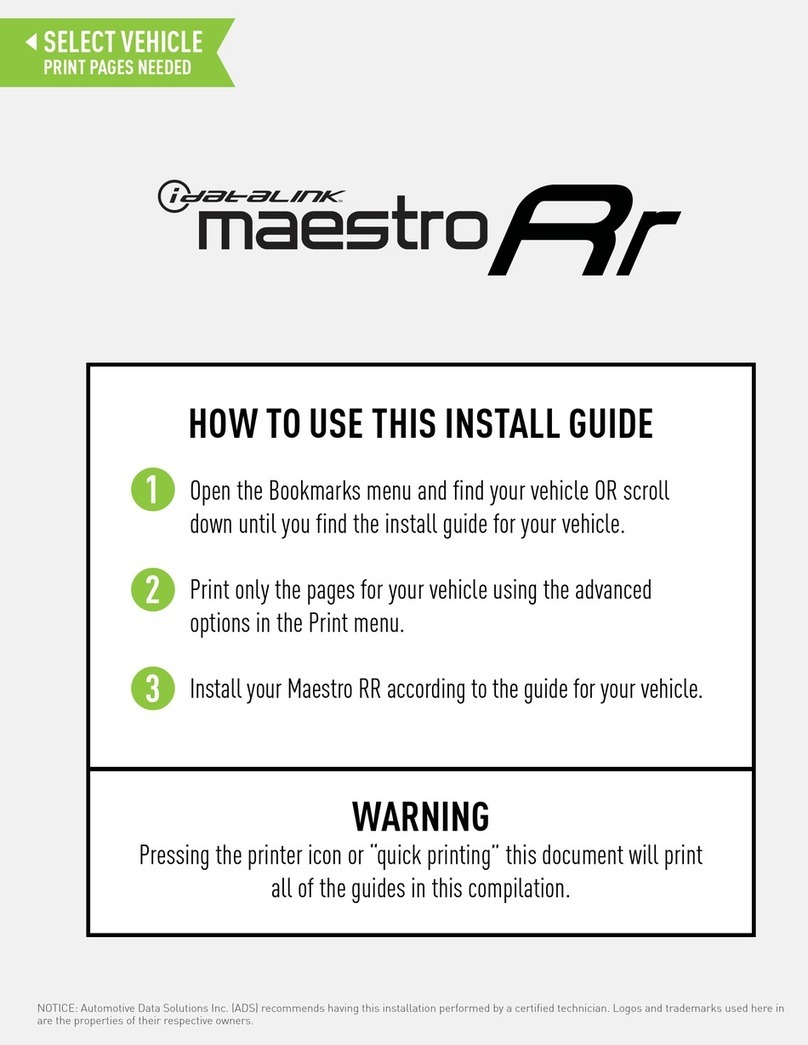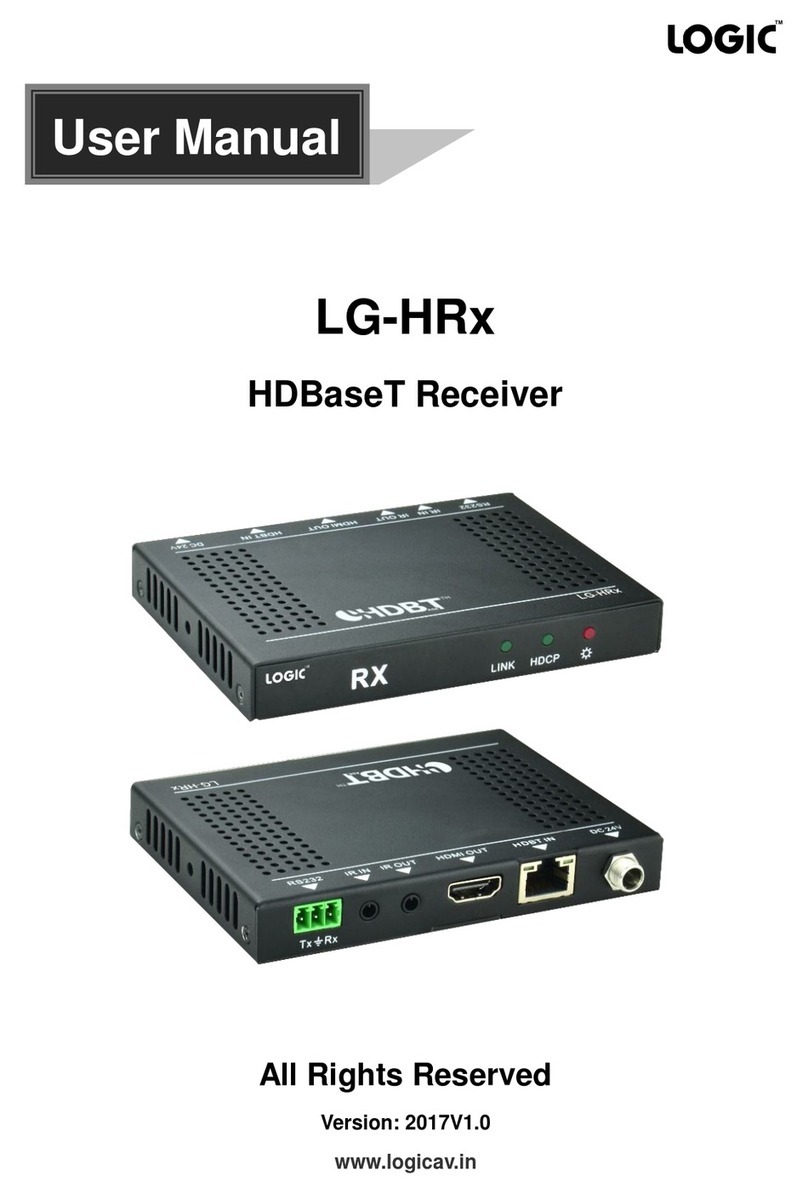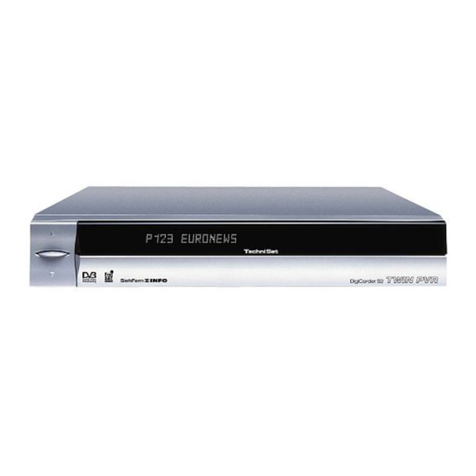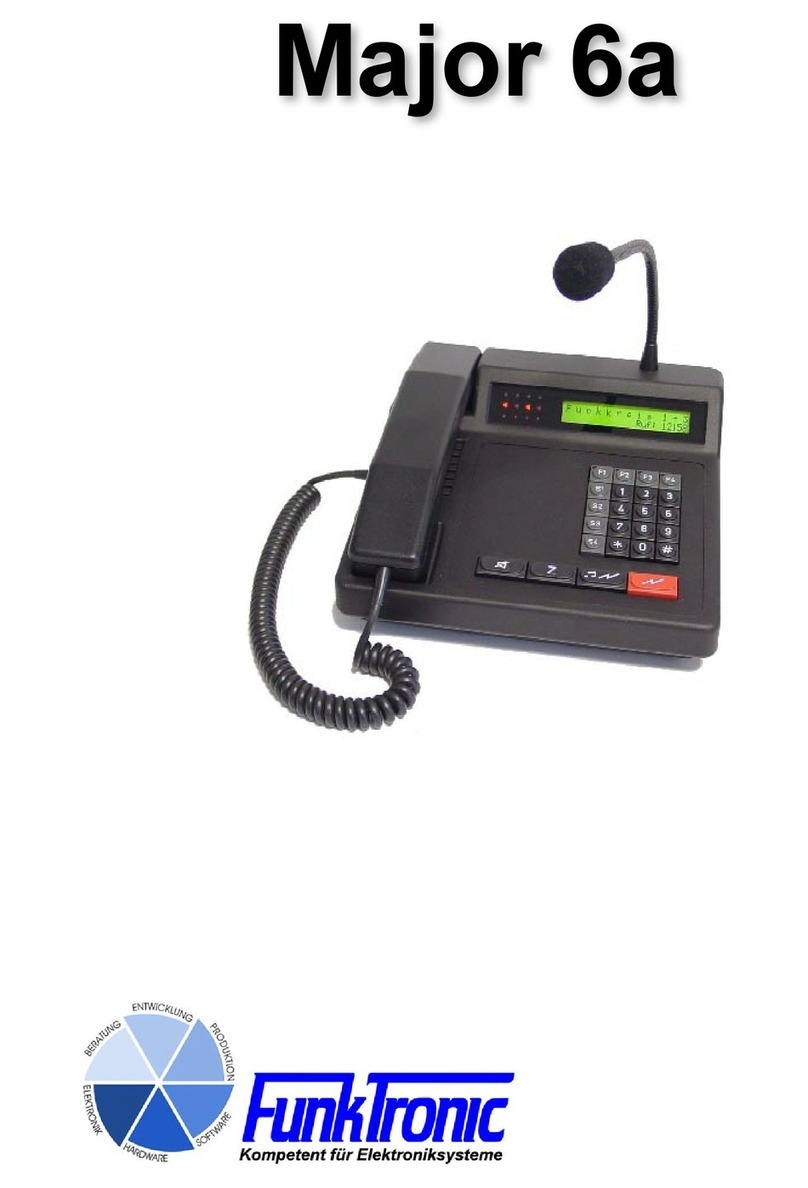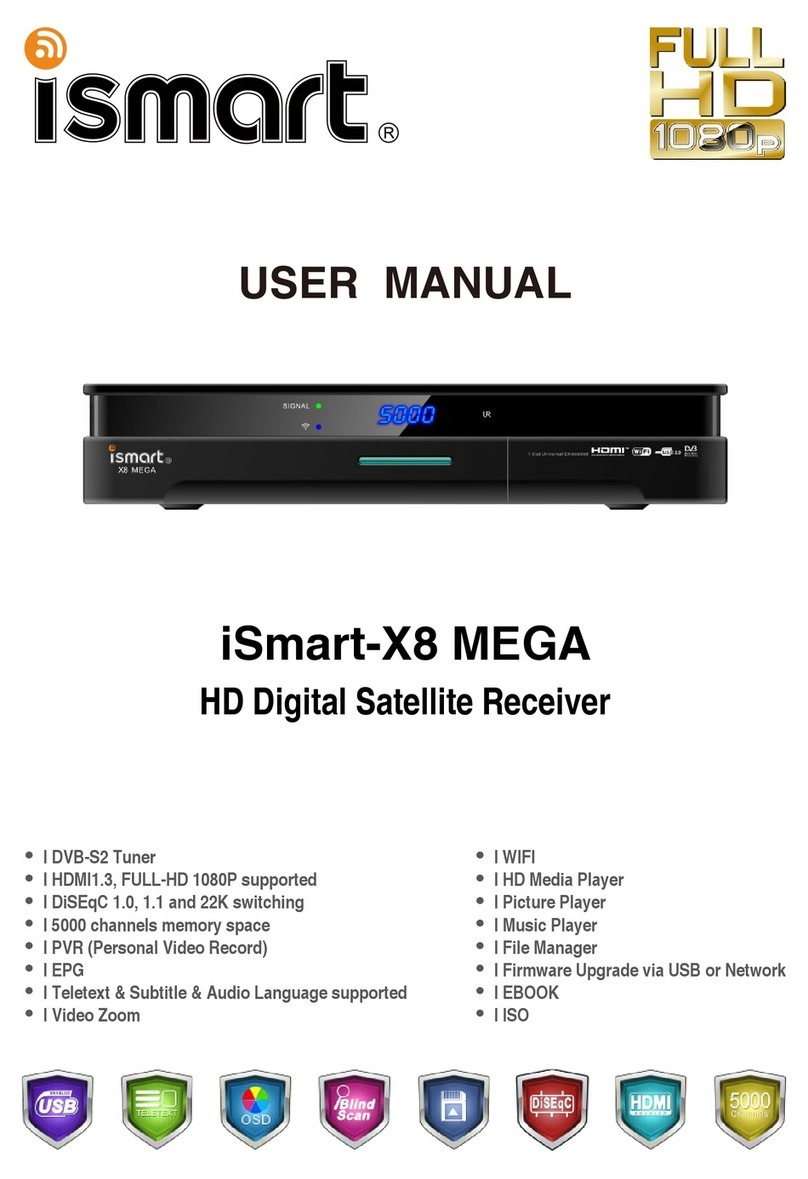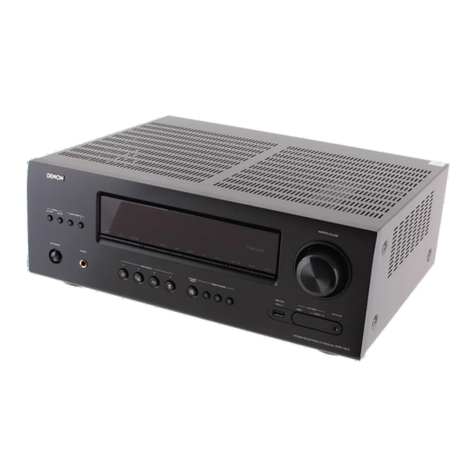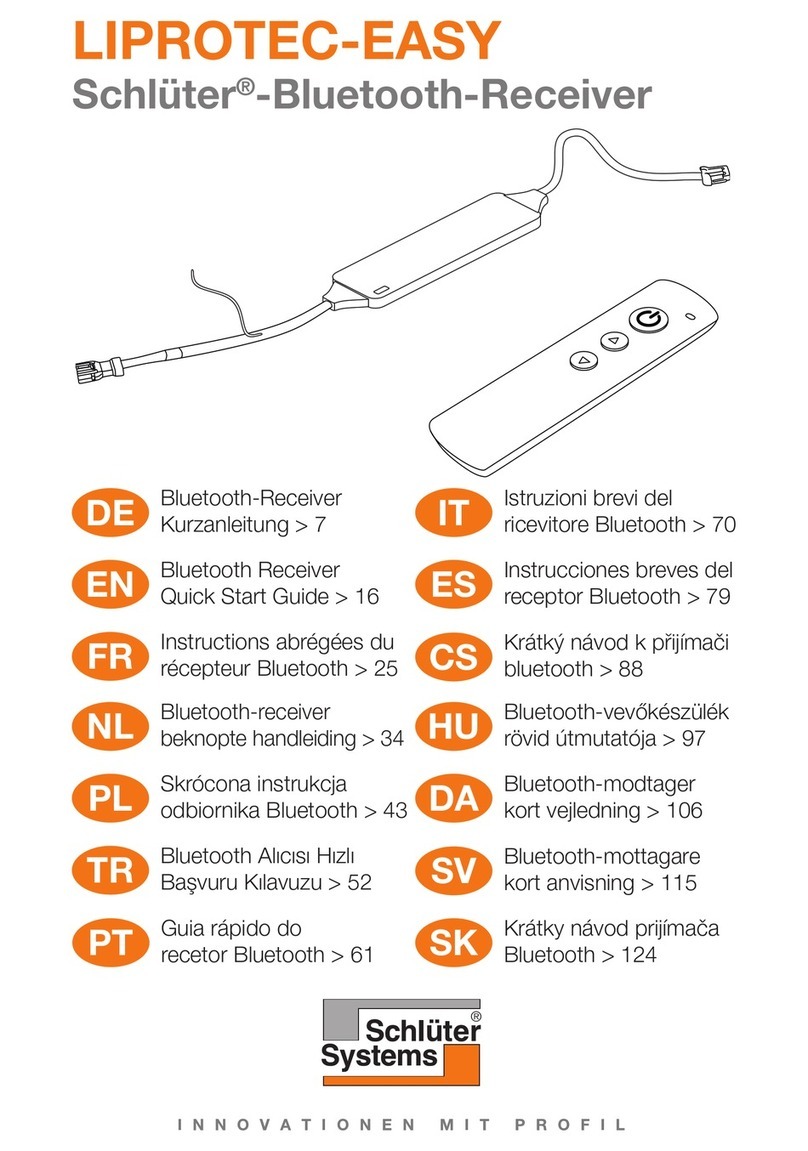
724-746-5500 | blackbox.com Page 19
Chapter 6: Serial and Telnet Extension
6. Serial and Telnet Extension
The MediaCento also supports serial extension on its own, via the RJ-11 (6 wire)
port labeled aux/ext. The unit, by default, is set for 115200 baud, 8 data bits, 1 stop
bit, and no parity. The port does not support flow control.
There are three types of this feature:
1. Type1 (Dynamic baud rate): In this mode, the client’s RS-232 baud rate is
configurable through special RS-232 commands. The redirection is controlled by
the PC RS-232 attached to the host side. When you set a fixed baud rate to
attach to the host and issue commands to connect to specified client, the
MediaCento starts RS-232 redirection. The connection can be dynamically
changed. For example, an HDMI Multicast TV Broadcast system might need to
control the TV through RS-232 commands.
2. Type2 (Static baud rate): In this mode, the RS-232 redirection is automatically
established between host and clients. You don’t need to explicitly issue com-
mands for establishing redirection. The FW code will automatically link the host
and clients all together using a pre-configured baud rate setting. Normally, this
static baud rate setting is pre-configured during manufacturing. You can change
the baud rate setting via “Console API.” Telnet serial extension allows for serial
output from a receiver through a Telnet connection. This disables serial input
coming from a transmitter, but allows for two-way communication to specific
devices.
Notes on how Type 2 links automatically together.
The host side holds a token, and a client that requests the token will get the token
to establish link if no other client has gotten the token already. When the client is
idle for 1sec (default value), the token is released for another client to request. This
model is designed so that the client can actively request the RS-232 connection.
Usage scenario: Multicast broadcast system with touch panels at the client sides that
needs communication to PC with RS-232.
3. Guest Mode: This mode is designed for controlling UART port 1 through an
external network attached controller (for example, PC). Only Type2 is currently
supported. The easiest way to test “Guest Mode” is to configure as “Type2 guest
mode,” then use the telnet utility to connect to the box’s port 6752. The telnet
session will become the RS-232 redirection session immediately, using
s0_baudrate setting.




















